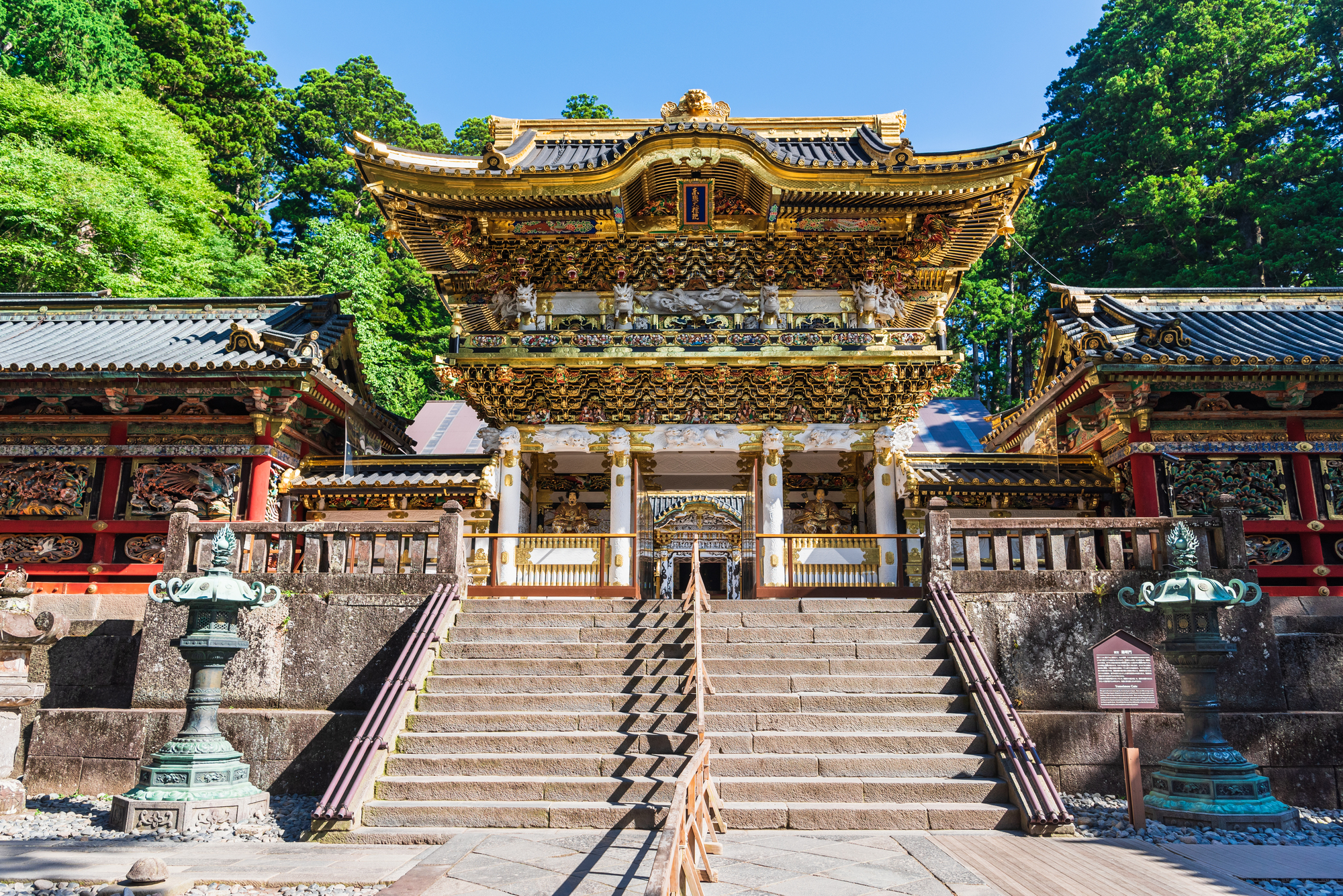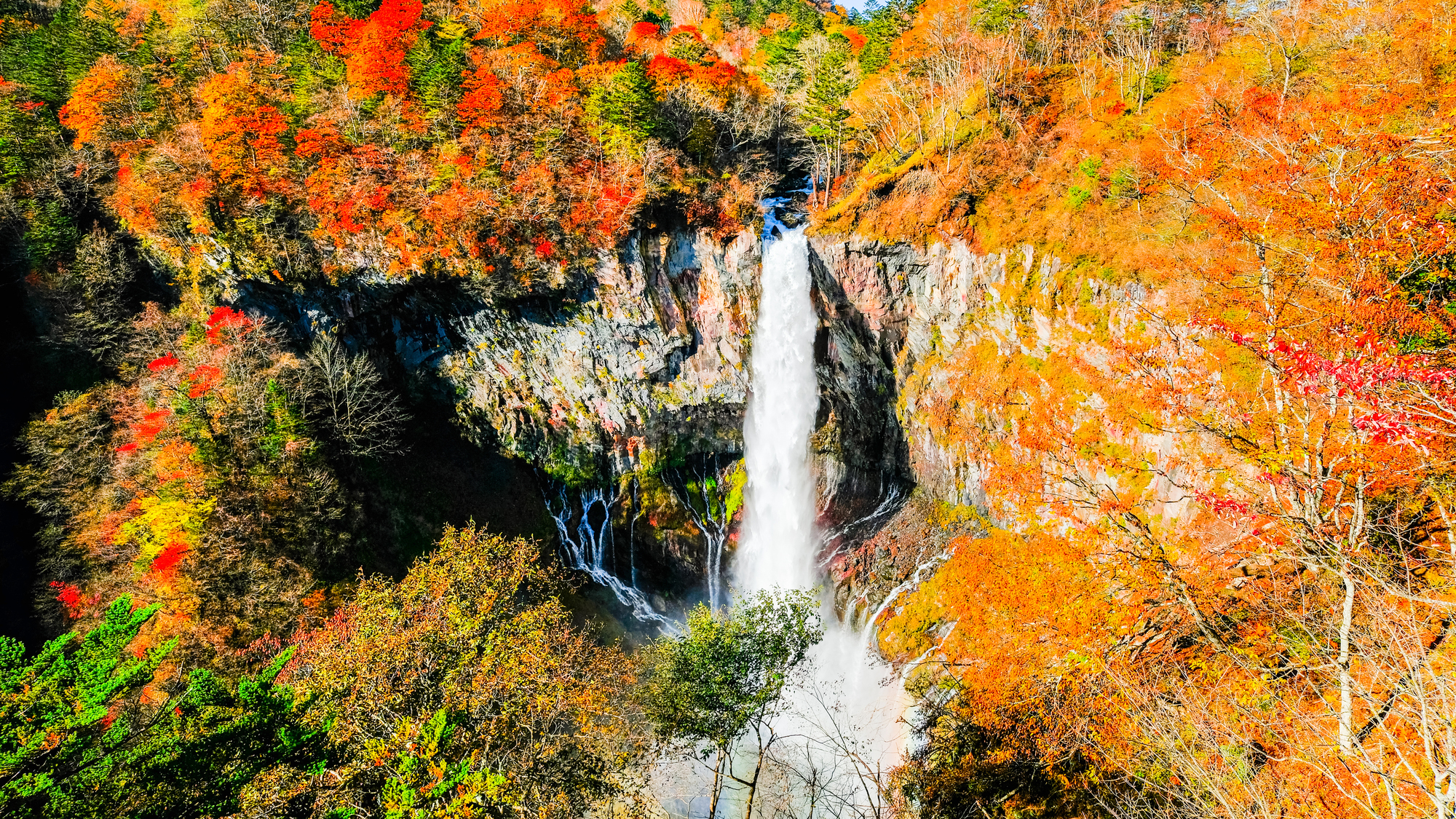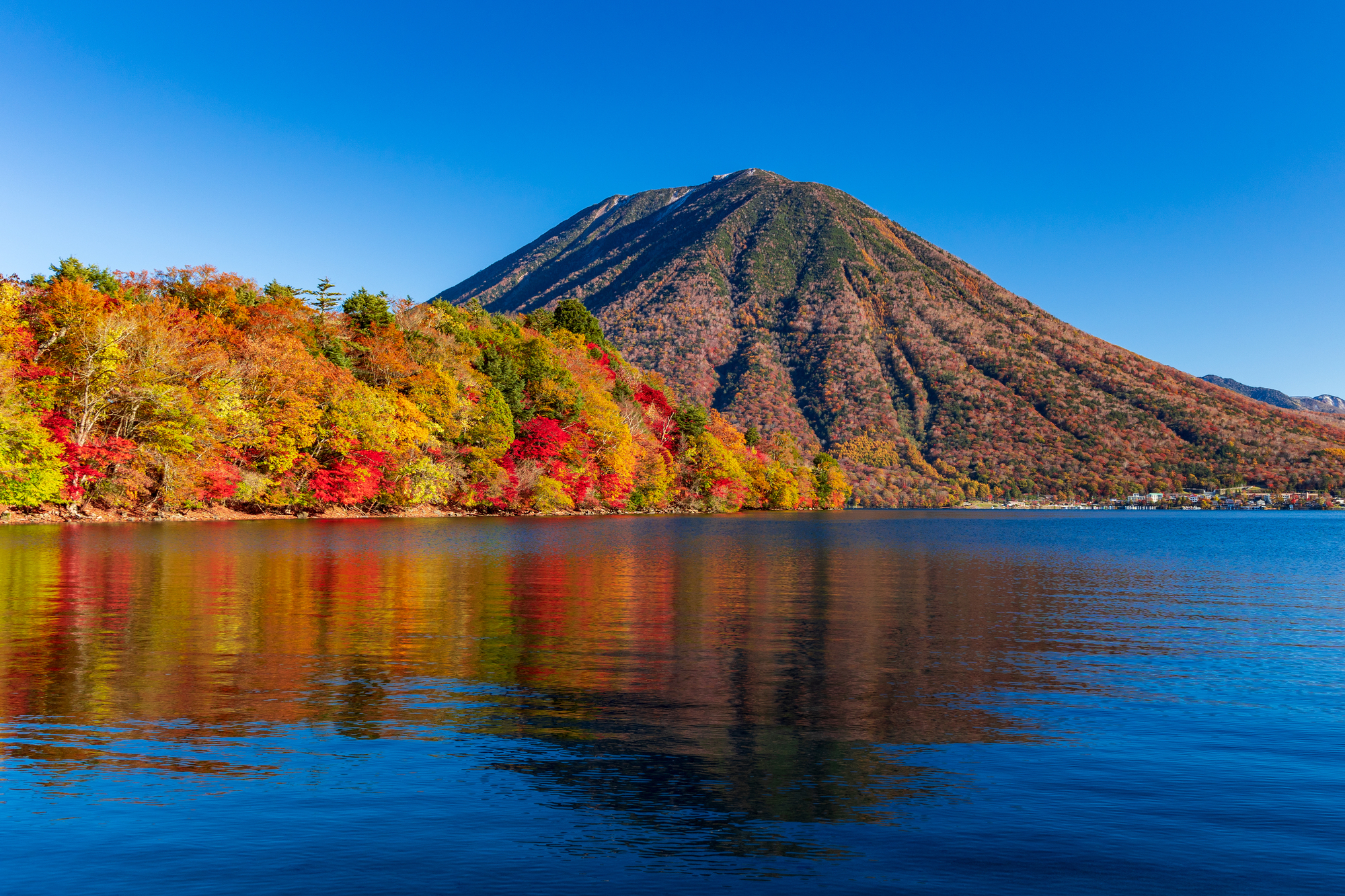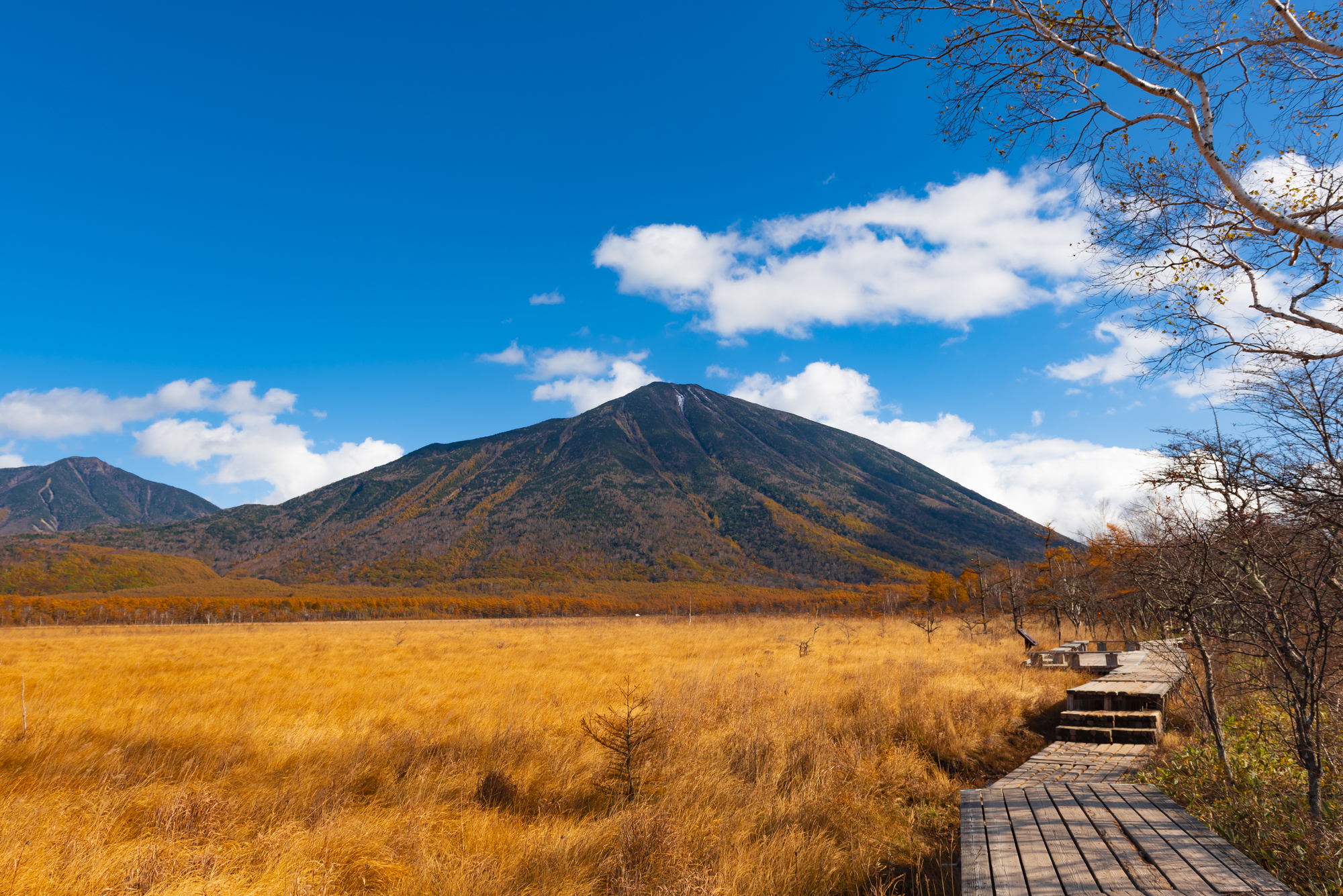Nikko Complete Guide
A Journey to Understand the True Meaning of "Magnificent"
Table of Contents
A Journey to Understand the True Meaning of "Magnificent." Welcome to Nikko.

"Don't say 'kekko' until you've seen Nikko."
This is a well-known proverb in Japan. "Kekko" here means more than just "magnificent." It expresses an ultimate sense of satisfaction, signifying "I am so content that I need nothing more."
Nikko, in Tochigi Prefecture, possesses an overwhelming power that truly instills this "kekko" feeling in its visitors. One reason is the World Heritage "Shrines and Temples of Nikko," the pinnacle of opulent splendor, built to deify Tokugawa Ieyasu, the founder of the Edo Shogunate, which established the longest period of peace in Japanese history. The other is the majestic, wild, and untouched nature—such as Lake Chuzenji, Kegon Falls, and Mt. Nantai—that solemnly adorns these sacred structures.
Nikko reveals its true value especially from autumn to winter when the air is crisp and clear. In autumn, the winding Irohazaka road is dyed in a fiery gradation, and the lacquer and gold leaf of the shrines and temples compete in beauty with the brilliant autumn trees. In winter, the precincts, hushed as if the tourist crowds were an illusion, are cloaked in snow and wrapped in a sublime silence. Amidst the freezing cold, the frozen waterfalls and ice flowers blooming on the lakeside display a mystical beauty, as if time itself has stopped.
This guide will not only let you be overwhelmed by the grand scale of Nikko's history and nature but will also help you deeply understand the spirituality and aesthetics that reside in its details. The etiquette introduced here is our responsibility as visitors to show respect for this sacred place, enrich our own experiences, and help pass this great heritage on to the future.
Now, are you ready? Let's embark on a journey to find the ultimate satisfaction, "kekko."
1.The Mountain Where Gods and Shoguns Sleep: The Depths of Nikko's History and Faith
Why has Nikko been regarded as such a sacred place, and why was such a magnificent complex of buildings constructed here? The answer lies in ancient mountain worship and the story of the Tokugawa clan, who unified Japan.
1-1. A Sacred Site of Mountain Worship: The Founding Story by Shodo Shonin
The history of Nikko began over 1,200 years ago in the Nara period, when a monk named Shodo Shonin climbed the towering Mt. Nantai and built a hall. In Japan's "sangaku shinko" (mountain worship), where nature itself, such as steep mountains and waterfalls, is revered as a manifestation of gods and buddhas, Nikko has long been a primary sacred site for ascetics in the Kanto region.
1-2. The Deification of the Ruler Tokugawa Ieyasu: The Founding of Toshogu Shrine and the Authority of the Edo Shogunate
Indispensable to the history of Nikko is the existence of Tokugawa Ieyasu, the founder of the Edo Shogunate and the man who laid the foundation for an era of peace that lasted about 260 years. Having ended an age of civil war, Ieyasu left a will stating, "After the first anniversary of my death, enshrine me as a god on Mt. Nikko. I shall become the guardian deity of peace for the Kanto region." Following this, a simple shrine was initially built, but during the time of his deeply admiring grandson, the third shogun Iemitsu, it was rebuilt into its current magnificent form as a major national project (the "Great Rebuilding of the Kan'ei Era").
This was not merely a religious building, but a grand political monument to display the unshakeable authority and financial power of the Tokugawa Shogunate to the entire country. The best artisans with the highest skills of the time were gathered from all over Japan, and Nikko Toshogu Shrine was created at an enormous expense.
1-3. The Prayer for Peace Encoded in Sculptures: The True Meaning of "See No Evil, Speak No Evil, Hear No Evil"
Each of the over 500 elaborate sculptures at Toshogu Shrine is imbued with deep meaning. The famous "Three Wise Monkeys" on the Sacred Stable depict a scene from a story likening a person's life, expressing the teaching, "In childhood, one should grow up honestly, without seeing, speaking, or hearing evil," which is a lesson for building a peaceful world. The national treasure "Sleeping Cat" is said to symbolize the advent of a peaceful era where even natural enemies like a cat and a sparrow can coexist, as the cat sleeps peacefully while sparrows play on the other side. All of these carvings contain a prayer for the "lasting peace" that Tokugawa Ieyasu wished for after ending the age of war.
1-4. [2025 Update] The Brilliance After the "Great Heisei Restoration" and How to Enjoy It Now
The shrines and temples of Nikko, including the National Treasure Yomeimon Gate, undergo large-scale preservation and repair projects over decades. In recent years, the "Great Heisei Restoration" was completed, reviving the vivid colors and brilliance of the time of their creation. You can once again see the essence of Japanese traditional techniques in the details of the lacquer, gold leaf, and sculptures.
As a current situation, with the return of domestic and international tourists, it gets extremely crowded, especially on weekends. For this reason, there are an increasing number of programs that allow for quiet appreciation, such as special night viewings after closing, light-up events, and early morning worship tours. Checking the official website for the latest information and utilizing these opportunities is a smart way to enjoy the site.
2.Preparations & Basic Info: Navigating the Vast Sacred Grounds Efficiently
Nikko's attractions are spread over a wide area. Efficient planning will determine the success of your trip.
2-1. Complete Access Guide from Tokyo
- Shinkansen + Local Line: Take the Tohoku Shinkansen from Tokyo Station to Utsunomiya Station (approx. 50 mins). At Utsunomiya Station, transfer to the JR Nikko Line to JR Nikko Station (approx. 45 mins).
- Limited Express Train (Tobu Railway): From Asakusa or Shinjuku Station in Tokyo, you can take the Tobu Railway's Limited Express "Kegon" or "Kinu" for a direct ride to Tobu-Nikko Station (approx. 2 hours). Various discount passes are also available.
2-2. Getting Around the Vast Nikko: The World Heritage Area and Okunikko Area
Nikko is broadly divided into two areas.
- World Heritage Area (Sannai): This area is concentrated with Toshogu Shrine, Futarasan Shrine, and Rinnoji Temple. It's about a 10-minute bus ride or a 30-minute walk from the JR and Tobu Nikko stations. Exploration within this area is primarily on foot.
- Okunikko Area: This is a nature-rich area located after ascending the Irohazaka road, including Lake Chuzenji, Kegon Falls, and Yumoto Onsen. It takes about 45 minutes by bus from the World Heritage Area to Lake Chuzenji. Trying to see both areas in one day will be very rushed, so plan with plenty of time.
2-3. The "Autumn Foliage War" and Winter Serenity: Current Seasonal Attire and Mindset
- Autumn (Mid-Oct to Early Nov): The season when Nikko is at its most brilliant, and also its most crowded. The "Irohazaka" road, in particular, experiences such severe traffic jams that it's dubbed the "autumn foliage war," and you must be prepared for traffic to be at a standstill for hours. If you aim for Okunikko during this period, visiting on a weekday or starting very early in the morning with public transportation is essential. Due to the difference in altitude, a light jacket may be fine at the base, but winter attire is necessary in Okunikko.
- Winter (Dec to Feb): Okunikko is a world of extreme cold, with temperatures often dropping below -10°C (14°F). Full winter gear comparable to ski wear and non-slip winter shoes are essential. The World Heritage Area is also very cold, but currently, it is also the best season to face the magnificent architecture in silence, with relatively fewer tourists.
3.[Crucial] Etiquette as a Visitor to a Sacred Place: 7 Manners to Keep in Nikko
This is not just a tourist spot, but one of the centers of Japanese spiritual culture. Visit with a reverent heart.
3-1. At the World Heritage Shrines and Temples: Different Forms of Prayer for Sacred Grounds
When visiting the shrines and temples of Nikko, knowing the difference in etiquette between them will deepen your cultural understanding.
|
3-2. Respect for National Treasures: The Absolute Rule of Not Touching Sculptures and Buildings
The sculptures and structures of Toshogu Shrine are National Treasures and Important Cultural Properties that have stood for 400 years. They are extremely vulnerable to wind, rain, and human skin oils, so never touch them with your hands. Leaning against them for photos is also strictly forbidden. Cultural Context: The spirit of protecting cultural properties in Japan and the value of "seeing." In Japan, cultural properties are considered treasures of the entire nation to be passed down to future generations. The underlying idea is to prevent deterioration from "touching" and to share their value and beauty through "seeing." |
3-3. Photography Manners: In Front of Yomeimon Gate and Inside the Halls
At popular photo spots like in front of the Yomeimon Gate, avoid occupying the space for a long time and take turns shooting. Photography is prohibited inside many temple and shrine halls. A flash can cause the colors of cultural properties to fade and deteriorate, so be cautious with its use even outdoors. |
3-4. On the Irohazaka Road: Driving and Riding Manners for Enjoying the Scenery
The Irohazaka road with its sharp curves is a spectacular driving course, but it requires extreme caution. It is very dangerous to get distracted by the scenery while driving or to stop in the middle of a curve. Even as a passenger on a bus, your body will sway significantly on sharp curves, so be sure to sit properly and hold on to the handrail. Cultural Context: The spirit of "yuzuriai" (yielding) on public roads. In Japanese road traffic, the spirit of "yuzuriai," which means not obstructing the flow and not endangering others, is highly valued. Both the enjoyment of the scenery and the composure to ensure safety are required. |
3-5. At Kegon Falls and Lake Chuzenji: Awe of Nature and Ensuring Safety

The power of the 97-meter-high Kegon Falls is overwhelming, but never perform dangerous acts like climbing over the fences of the observation deck. To protect the rich nature of Okunikko, littering is also strictly prohibited. |
3-6. Encountering Wild Monkeys: Keep Your Distance and Do Not Feed
Nikko is also a habitat for wild Japanese macaques, and you may encounter them, especially around the Irohazaka road. No matter how cute they are, never feed them or approach them. Showing them food can be dangerous as they might attack. Keep your car windows closed even when inside the vehicle. |
3-7. Onsen Etiquette: Receiving the Blessings of Yumoto with Gratitude
When visiting Yumoto Onsen in Okunikko, follow basic Japanese onsen manners. Rinsing before entering, not putting your towel in the bath, and using the washing area cleanly—these considerations create a pleasant atmosphere for everyone. Cultural Context: The history as a "toji-ba" and the sharing of a healing space. Many onsen resorts are historic "toji-ba" (therapeutic spas). It is important to have the mindset of sharing this sacred place for healing illnesses and injuries pleasantly with everyone. |
4-1. Spectacular Autumn Foliage: Best Spots at Irohazaka, Ryuzu Falls, and Lake Chuzenji

Due to the altitude difference, you can enjoy Nikko's autumn foliage for a long period, starting from late September in Okunikko to early November in the city area. The "Irohazaka," changing its expression with every one of its 48 curves, the "Ryuzu Falls" with its beautiful contrast between the waterfall and autumn leaves, and the foliage of "Lake Chuzenji" viewed from a pleasure boat are truly spectacular.
4-2. The Serene Winter Landscape: Snow-Covered Shrines and the Frozen Kegon Falls
4-3. Savoring Nikko's Specialty, "Yuba": From Shojin Ryori to Modern Creative Dishes
The specialty of Nikko is "Yuba" (tofu skin). It is the film that forms on the surface of heated soy milk. In Nikko, it is characteristically thick and chewy because it is lifted in double layers. With a history of developing as part of the shojin ryori (vegetarian cuisine) of the shrines and temples, you can enjoy it in various forms, from elegant kaiseki dishes to creative modern foods like yuba ramen and yuba soft-serve ice cream.
4-4. The Other Side of Nikko: Edo Wonderland and Kinugawa Onsen
A short trip away, you can also find "Edo Wonderland Nikko Edomura," a theme park where you can experience the townscape and culture of the Edo period, and "Kinugawa Onsen," one of the Kanto region's major hot spring resorts. The depth of the Nikko area lies in its ability to offer not only history and nature but also entertainment and onsen resort experiences.
5.Planning Your Trip: Model Itineraries of History and Nature
5-1. [Day Trip] From Tokyo! A Concentrated World Heritage Course
- Morning: Arrive at Tobu-Nikko or JR Nikko Station. Take a bus to "Shinkyo" (Sacred Bridge).
- Until Noon: Tour Rinnoji Temple, Toshogu Shrine, and Futarasan Shrine on foot. Take your time at Toshogu to see the Yomeimon Gate, the Three Monkeys, etc.
- Lunch: Have a "Yuba" cuisine lunch around the World Heritage area.
- Afternoon: Visit the treasury hall of Nikkozan and then head back to the station for souvenir shopping.
- Evening: Return by limited express or Shinkansen.
5-2. [1 Night, 2 Days] Conquering Autumn in Nikko! A World Heritage and Okunikko Autumn Foliage Course
- Day 1:
〇Morning: Arrive in Nikko. First, head to Okunikko by bus to enjoy the autumn foliage of the "Irohazaka" (be aware of traffic).
〇Noon: Lunch by the shore of Lake Chuzenji.
〇Afternoon: Visit Kegon Falls, then stroll around Ryuzu Falls and other spots. Check into an inn at Chuzenji Onsen or Okunikko Yumoto Onsen.
- Day 2:
〇Morning: Check out from the inn and head to the World Heritage area by bus. Visit Toshogu Shrine and other sites.
〇Noon: Lunch around the World Heritage area.
〇Afternoon: Head to the station while looking for souvenirs, and begin your journey home.
The Sublime Beauty Created by Man and Nature to Take Home with You

When you finish your journey in Nikko, the memory of the breathtaking sculptures of the Yomeimon Gate and the overwhelming roar of Kegon Falls will be deeply engraved in your heart.
What Nikko teaches us is the highest level of human skill and passion, and the greatness of nature that embraces and elevates it to something even more sublime. When human skill and natural power respect each other and harmonize perfectly, a beauty so moving to the human heart is born.
Following the rules and respecting history and nature in this land is nothing less than participating in the creation of that grand beauty. The best souvenir you can take home is the very sense of awe you felt for this sublime beauty.

